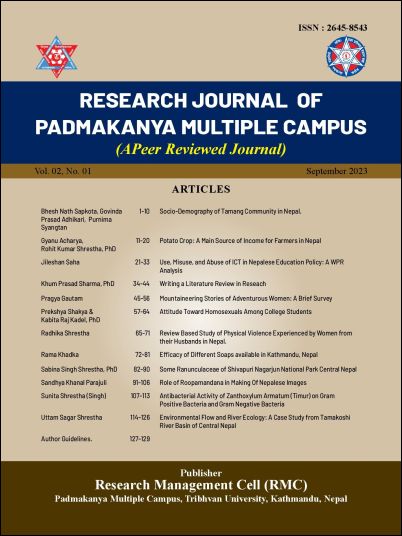Socio-Demography of Tamang Community in Nepal
DOI:
https://doi.org/10.3126/rjpkmc.v2i1.62984Keywords:
Caste, Culture, Economic, Social, TamangAbstract
Tamang is one of the largest ethnic groups in Nepal. They live scattered all around the country, and they live in the hilly region of the country. This paper highlights the caste, culture and demographic status of the Tamang people of Nepal. This study is based on secondary information which has obtained from the published literature. Tamangs have a rich culture, tradition and religion. They are followers of Bon and Buddhism. Farming is a major source of income. Most of them are dependent on agricultural work. Tamang is socially, economically and educationally back warded ethnic group of the country. The illiteracy rate is still higher than other castes. Also, they have a high rate of school dropouts because of their poor economic family background and poor academic progress. Half of the Tamang children have to work in addition to attending schools; they do not play a significant role to bring change in their social and economic status. They are rich in their language, culture, arts and skill. Tamang's various rites, rituals and skills of painting attract foreigners. Tamang community is socially, economically and educationally back warded. They should be addressed by the considered agency from exploitation and backwards community.




